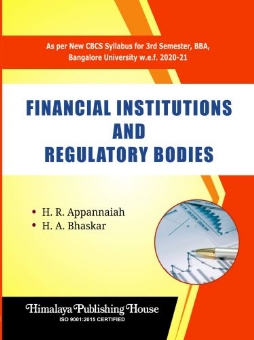Financial institutions, as a company, deal in all types of finance-related businesses. FIs are different from banks. They deal in loans and advances and also specialise in goals. Some sector like hire purchase, leasing etc. The goals of all FIs are different. They provide different services and have different levels of risks associated with it.
Many financial institutions accept deposits by obtaining permission from RBI and offer attractive returns on investment. This supports the liquidity aspect of FIs.
Commercial banks are also a major segment of financial market and play a vital role in providing finance to every individual of the society. These are directly governed by central bank of the country (RBI) and have a broader base of operations compared to specialised financial institutions.
Financial institutions and banks when they handle huge financial resources and manage public money, are definitely exposed to fraudulent practices. Systemic failure of financial regulation demanded governments to regulate the operations of FIs and banks and thus caused the establishment of regulatory bodies to maintain financial discipline.
Regulation of financial institutions including banks has become a matter of great public interest, eversince financial crisis took place in the US, and all over the world in 2008. Financial regulation, being a key public policy to be followed by any government, pursues a variety of objectives. Most important objectives are to maintain financial discipline in FIs and banks and preserve financial stability.
Regulatory bodies, besides focusing on overall maintenance of financial discipline in financial system of the country, also address the issues such as fair competition, consumer protection and prevention and reduction of financial crimes.
This book “Financial Institutions and Regulatory Bodies” is brought out covering the aforesaid aspects of financial institutions and also the syllabus of third semester, B.Com of Bangalore City University. Book is written in a simple style. Students and other readers can easily understand the various operational dimensions of financial institutions. Skill exercises given after the end of the text, will provide students an additional base to reinforce the understanding of the subject.
Contents –
Unit – I: An Overview of Financial System
1. An Overview of Financial System
Unit – II: Banking Institutions
2. Banking Institutions
3. Commercial Banking – I (General Aspects & Role)
4. Commercial Banks – II (Investment Policy)
5. Banking Sector Reforms
Unit – III: Non-Banking Institutions
6. Non-Banking Financial Institutions – I
7. Non-Banking Financial Institutions – II (NBFIS)
Unit – IV: Developmental Institutions
8. Development Institutions-I (IDBI, SIDBI, NABARD, REC, IIFCL,VTI and REC)
9. Development Institutions-II (IFCI, ICICI-BANK, SFCS, EXIM BANK, LIC, GIC and NHB)
Unit – V: Regulatory Bodies in India and Trends in Banking
10. Regulatory Bodies in India – I (Reserve Bank of India)
11. Regulatory Bodies In India – II (SEBI, IRDA – PFRDA)
12. Trends in Banking
Regulatory Bodies In India – II







